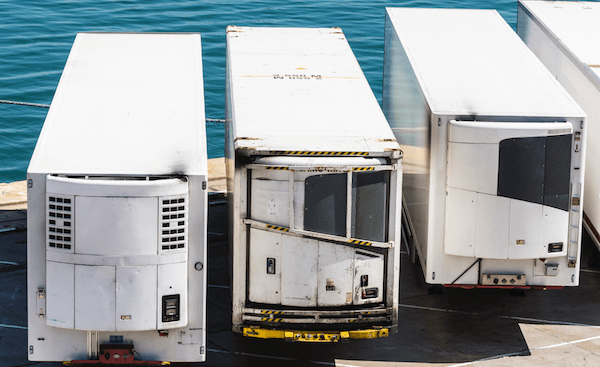The global cold chain is experiencing massive growth, and demand for temperature-controlled services and capacity is heating up. An already growing $110 billion market in 2014, the global cold chain is expected to reach $271.9 billion by the year 2020 (Nasdaq).
What is the Cold Chain?
A temperature-controlled supply chain—or cold chain—involves all of the activities required to preserve, store, transport, and distribute perishable goods from their origin to the retailer. Because food and pharmaceuticals are the largest end-user industries in the cold chain, logistics services tend to focus on adding value by properly storing goods, increasing shelf life, and avoiding spoilage-related waste.
Why the Growth?
Opportunities emanate from a number of key areas:
- Frozen food demand. Swelling populations and higher disposable incomes feed demand for more food, including frozen foods. Increased imports and exports of meat, fish, and seafood are also fueling growth (Nasdaq).
- Food spoilage prevention. Healthier lifestyles and demand for year-round seasonal produce make temperature-controlled shipping a must for farmers, who rely on the cold chain to move and store fresh produce. Prolonging freshness enables longer transportation hauls and shelf lives for perishables, thus enhancing profits (Logistics Management).
- Sustainability efforts. At least a third of the food produced in the world gets thrown away (Nasdaq). Collectively the third-largest emitter worldwide, food waste accounts for an astounding 3.6 gigatons of CO2 in the atmosphere. By implementing efficient cold chain processes in developing countries, experts hope to see a tenfold reduction in greenhouse gases (Nasdaq).
- Pharmaceutical growth. Increases in access to healthcare, innovation, targeted therapies, “biological” medicines, and global clinical trials have led to a focus on continuous improvement in pharmaceutical cold chains because poor temperature control in a single shipment can lead to millions in losses. As a result, the pharmaceutical cold chain market will grow from $8.36 billion in 2015 to more than $10 billion by 2018 (Logistics Management).
Risk Aversion
Transporting perishable goods is a risky business. Temperature violations en route are extremely common and can lead to shelf-displacement, tarnished relationships, and millions in lost sales. To avoid problems, it’s more important than ever for food and pharma manufacturers to align themselves with partners who understand the nuances of temperature-controlled shipping—those that provide access to reliable equipment, enforce strict carrier compliance, and proactively anticipate circumstances under which violations occur.
Are you at risk of a large product loss due to mismanaged temperature-controlled shipping? Our team has a high level of expertise when it comes to moving refrigerated and frozen commodities. We are experts in FSMA and the food chain, and we work with some of the most reliable carriers in the industry who share our expertise in moving high-touch freight. Our carriers are committed to meeting our high standards, your standards, and most importantly your customers’ standards. We understand that the total cost of not meeting these standards can be significant for your customers. Therefore, we work diligently to ensure your customer relationships are not jeopardized due to mismanagement of your products during transit.
Whether you’re shipping fresh fruit, meat, or ice cream, we’ll make sure your products arrive at their destination at the right time and according to your requirements.

